This site uses only a few technical cookies necessary for its operation. By continuing to browse, you accept their use.
To find out more...
To find out more...
Wipe meats and fish before cooking
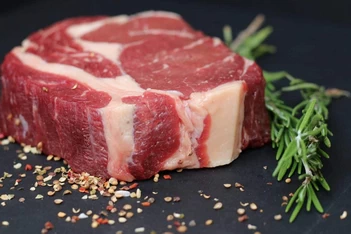
When you want to cook meat or fish, there's a very simple yet very important step to take before you even start: It's to dry, or wipe, each side of the meat or fish, sometimes called "dabbing" or "sponging".
But why? And how? Let me explain.
But why? And how? Let me explain.
8,977 4.5/5 (4 reviews)
Keywords for this post:CookingDryingDryingMeatFishKitchen towelPaper towelPaper towelLast modified on: April 14th 2024
Wipe meats and fish before cooking
When we're about to cook meat, we often take it out of the fridge, where it was wrapped in paper.
If it's been waiting a while, you've probably already noticed that it's moist, sometimes even almost wet, which is normal, as meat naturally exudes a little muscle fluid when it's resting.
The same goes for fish and scallops, which naturally become moist and slightly sticky when they wait a little too long before cooking.
This moisture isn't a problem in itself, but it can be a bit of a hindrance to cooking, because if you put the meat directly into the hot pan (for example), the moisture will, with the heat of the pan, create a little film of steam between the meat and the bottom (of the pan).
On the one hand, this film will reduce the cooking heat, thus increasing cooking time, but above all it will slow down caramelization (the famous Maillard reactions), and unfortunately your meat won't brown as well, and won't taste as good.
As you can see, it's no big deal, but the solution is so simple that it would be a shame to do without it: simply dry the meat well, dabbing it with a cloth or paper towel, before seasoning and cooking.
The same goes for fish and scallops: simply pat dry with kitchen paper before seasoning and cooking.
It's a reflex that restaurant chefs have: they systematically dry all their meats and fish before cooking them.
It's in our interest to follow their example...
To sum up: You should always dry meat or fish by dabbing it with a paper towel or tea towel before cooking, to ensure better cooking and coloring.
If it's been waiting a while, you've probably already noticed that it's moist, sometimes even almost wet, which is normal, as meat naturally exudes a little muscle fluid when it's resting.
The same goes for fish and scallops, which naturally become moist and slightly sticky when they wait a little too long before cooking.
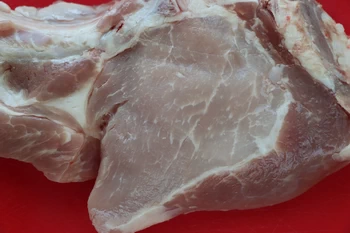
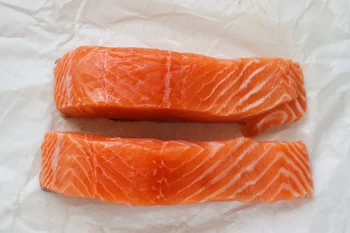
This moisture isn't a problem in itself, but it can be a bit of a hindrance to cooking, because if you put the meat directly into the hot pan (for example), the moisture will, with the heat of the pan, create a little film of steam between the meat and the bottom (of the pan).
On the one hand, this film will reduce the cooking heat, thus increasing cooking time, but above all it will slow down caramelization (the famous Maillard reactions), and unfortunately your meat won't brown as well, and won't taste as good.
As you can see, it's no big deal, but the solution is so simple that it would be a shame to do without it: simply dry the meat well, dabbing it with a cloth or paper towel, before seasoning and cooking.
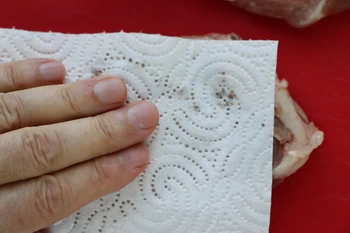

The same goes for fish and scallops: simply pat dry with kitchen paper before seasoning and cooking.
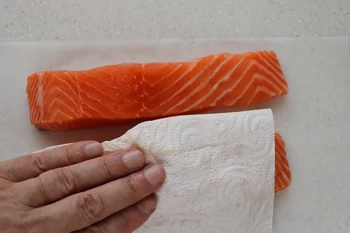

It's a reflex that restaurant chefs have: they systematically dry all their meats and fish before cooking them.
It's in our interest to follow their example...
To sum up: You should always dry meat or fish by dabbing it with a paper towel or tea towel before cooking, to ensure better cooking and coloring.
Lasts posts
Butter vs. grease
We often read in a recipe where a pastry is put into a mould that, just before pouring, the mould should be buttered or greased. But what's the difference between these 2 terms?December 1st 20259845
Getting out of the fridge early
Very often when you're cooking, you need to take food or preparations out of the fridge, to use them in the recipe in progress. There's nothing tricky about this: you just take them out of the fridge and use them, usually immediately, in the recipe. But is this really a good method?November 24th 20251,1175
Who's making the croissants?
When you look at a bakery from the outside, you naturally think that in the bakery, the bakers make the bread, and in the laboratory, the pastry chefs make the cakes. It's very often like that, with each of these professions having quite different ways of working, but sometimes there's also one...November 23th 20251,009
Oven height
When we put a dish or cake in the oven, we naturally tend to put it on the middle shelf, and that's what we usually do. But in some cases, this position and height can be a little tricky, so let's find out why.October 8th 20252,7445
The importance of sieving
In recipes that use a fine powder (flour, powdered sugar, etc.), you'll often see the advice to sift before using it. To sift is to pass the powder in question through a sieve (a very fine strainer) before incorporating it into your recipe. It's often advice, but is it really useful?September 3rd 20257,5293
Other pages you may also like
Steam for baking bread
What does steam have to do with bread-making? This is not only a bakers' secret, it is something you might not think of at all: if you make bread and bake it like a cake, you will end up with bread, but pale and with a thick, hard crust – a long way from the golden-brown crusty loaf you had in...June 16th 2021147 K4.5
Well-cooked meat
Have you ever noticed that if you like your meat well done, it invites strange looks? For instance, in a restaurant, when asked “How would you like that cooked?” If you reply, “Well done,” it is almost as if you are swearing….May 21th 201134 K 14.4
Double cooking of vegetables
When you cook vegetables, it's not easy to capture and preserve the flavours. It is easy to undercook, but you can make up for it, or overcook, and then it is unfortunately a bit cooked (in the sense of "ruined"). But above all, how to get the maximum of the taste of the vegetable in the pan, then...July 12th 201924 K4.1
Roasting spices
If you like your food a little, or a lot, spicy, you'll no doubt have a jar or sachets of mixed spices in your cupboards from which to draw when preparing a dish. I'm thinking, for example, of curries, chili and couscous, all of which fill the kitchen, and sometimes far beyond...October 30th 20209,8314.9
Remove bones from fish
Let's talk about fish: It's not a scoop, it's much more pleasant to eat fish from which all the bones have been carefully removed, even if it's a rather painful and time-consuming job, the result is worthy of your efforts. Here are some important points to keep in mind.October 16th 202114 K5
Post a comment or question
Follow this page
If you are interested in this page, you can "follow" it, by entering your email address here. You will then receive a notification immediately each time the page is modified or a new comment is added. Please note that you will need to confirm this following.
Note: We'll never share your e-mail address with anyone else.
Alternatively: you can subscribe to the mailing list of cooling-ez.com , you will receive a e-mail for each new recipe published on the site.









